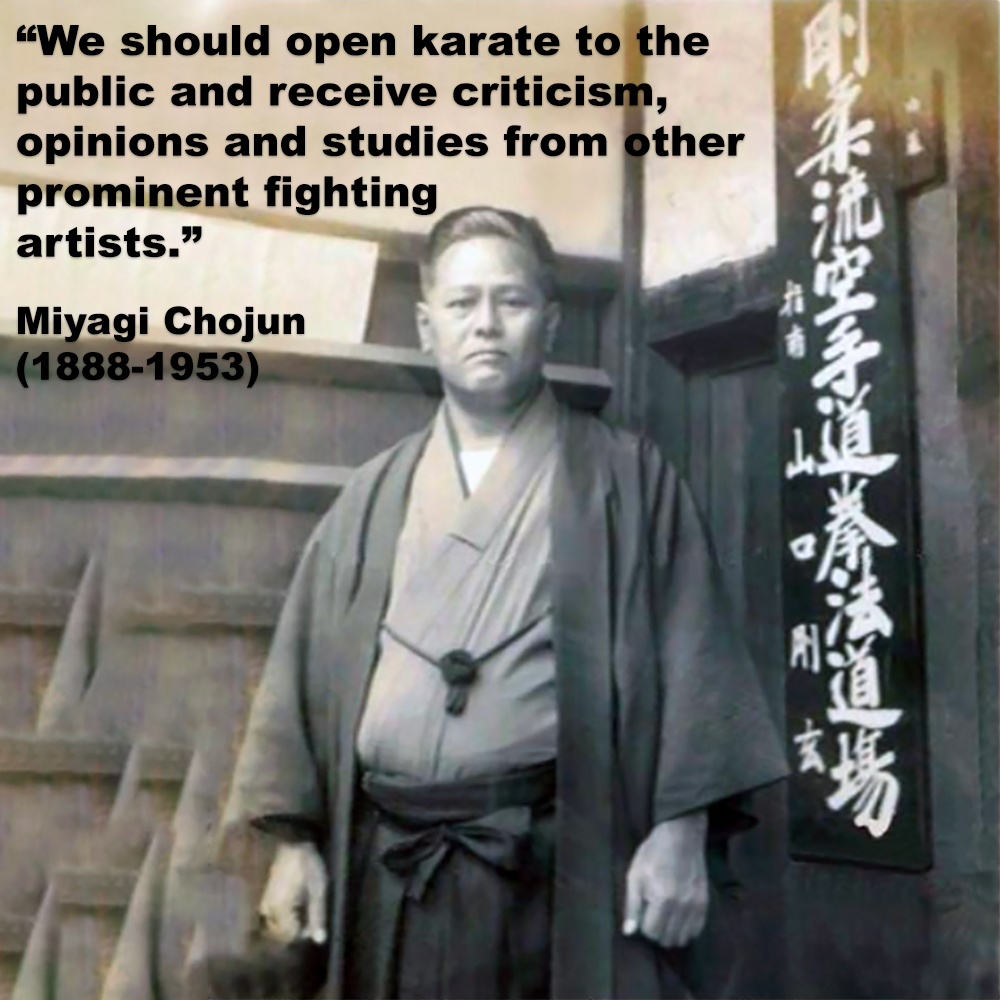
"We should open karate to the public and receive criticism, opinions and studies from other prominent fighting artists." - Miyagi Chojun (1888-1953)
Posted by ADAM CARTER on APR 16, 2023

"We should open karate to the public and receive criticism, opinions and studies from other prominent fighting artists." - Miyagi Chojun (1888-1953)
The modern interpretation of karate, and its many variations, has evolved in to something quite different to which the original pioneers had in mind when it was first developed.
Many of the techniques of karate have become completely unrealistic in application, which unfortunately, are often passed off as real-world practical self-defense techniques.
What we believe to be the original practical, pragmatic karate has been lost in time, either because it was not passed on by the teachers of the day, or perhaps those teachers didn’t know themselves.
In many dojo, karate is no longer about self-defense, it has become a means of physical fitness, sport, and personal development.
In the early days of Okinawan karate, the primary focus was on self-defense techniques as a means of protecting themselves from civilian attackers.
Karate was taught in secret to ensure that the techniques were not passed on to the wrong people. The techniques of karate were simple, efficient, and practical, and were designed to inflict maximum damage, in the shortest amount of time.
Today, traditional karate is mainly judged on how it looks, or winning a competition, rather than how effective it is. The combative applications that were once the primary function of karate, are mostly not effective in real-world settings.
The effectiveness of any technique is often interpreted by instructors in the context of “3K" karate, with the long distances and karate-ka vs karate-ka attack and defense. It works just fine in the context of fixed ‘kumite’, just not in a real-world combat situation.
And if it doesn’t work, many practitioners (and instructors) don't have the knowledge to question the practicality of these techniques, because they have no experience regarding real-world civilian fighting or violence.
Misconceptions are often made in training, because practitioners, don’t realize that they are making them. And what makes this so problematic, is that they don’t recognize or understand there is a problem in the first place.
Practitioners were taught something impractical, but were advised not to question the instructor on the technique's practicality. This would then be passed on to the next generation.
Does that mean todays instructors and masters have got it wrong?
Like any human being, practitioners, instructors and those deemed to be masters, can still make mistakes or get things wrong. Being a master in a martial art does not mean that they are infallible or have perfect knowledge of everything related to their practice.
They too can be subject to error, misjudgment, or even lack of knowledge on certain aspects of practice. And most have the humility to acknowledge this.
A high rank in the martial arts is not necessarily a sign of experience and knowledge. Ranks are not always given to reflect ability, and standards vary widely. Sadly, grades can be given for political and financial reasons too. Rank given in one area does not equate to knowledge in another.
We also need to acknowledge there are many variations in what karate is. It can be physical exercise, art, sport, self-defense, etc.
The real issue when people refer to karate, is that they refer to it as a singular entity, when in fact today there are many variations and countless interpretations from each individual schools. Even though they share the same foundation, these styles may vary in the way they apply technique and principles.
Karate, like any martial art, is constantly evolving and improving (or it should). New strategies and approaches are continually being developed and refined. All of us, even the most experienced karate master, can learn something new or adapt their techniques to suit changing circumstances.
The problem with karate, whether it is effective today or not, is not the art itself, but in the context it is taught and trained.
“We should open karate to the public and receive criticism, opinions and studies from other prominent fighting artists.” - Miyagi Chojun (1888-1953)
